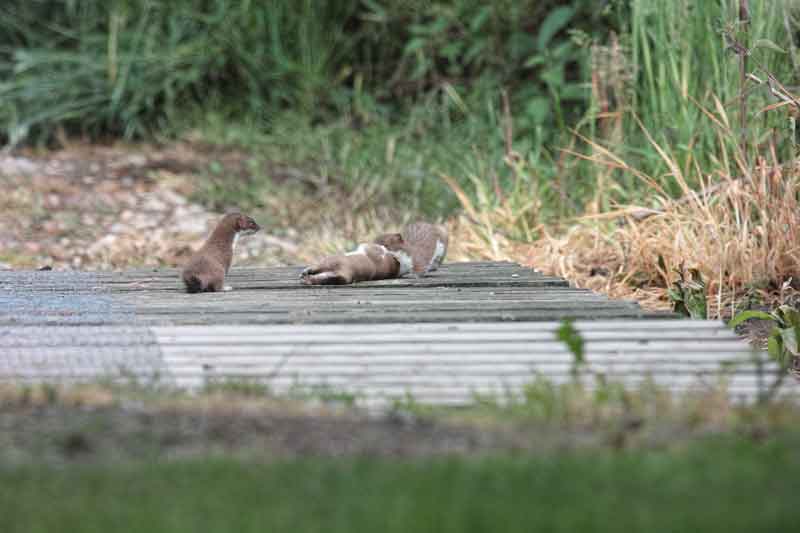As those of you who are observant will have noticed there are Damselflies and Dragonflies starting to appear over the lake and the meadow.
"How do you tell the difference between the two?".....I hear you ask !
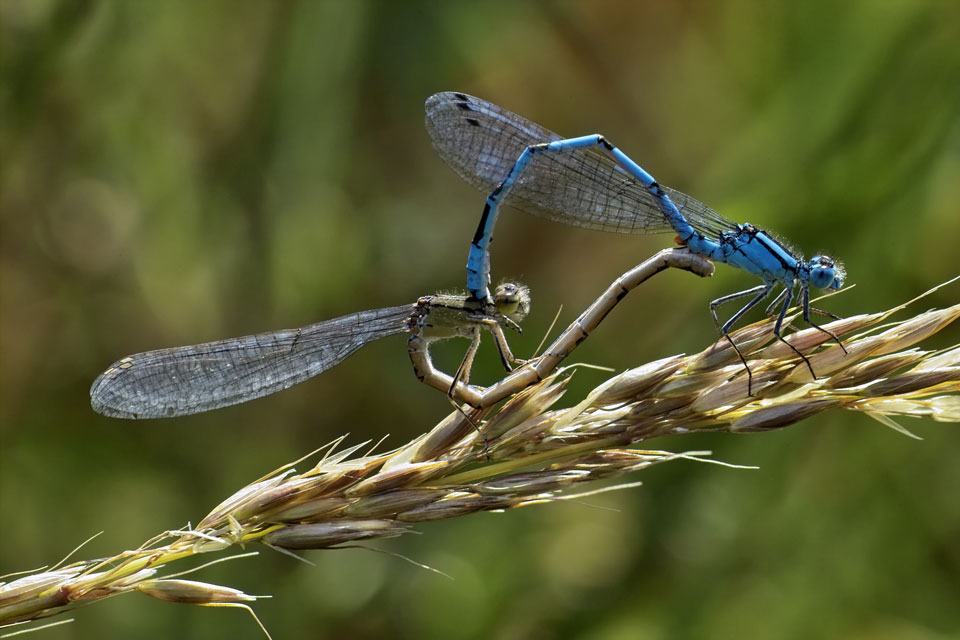
![]()
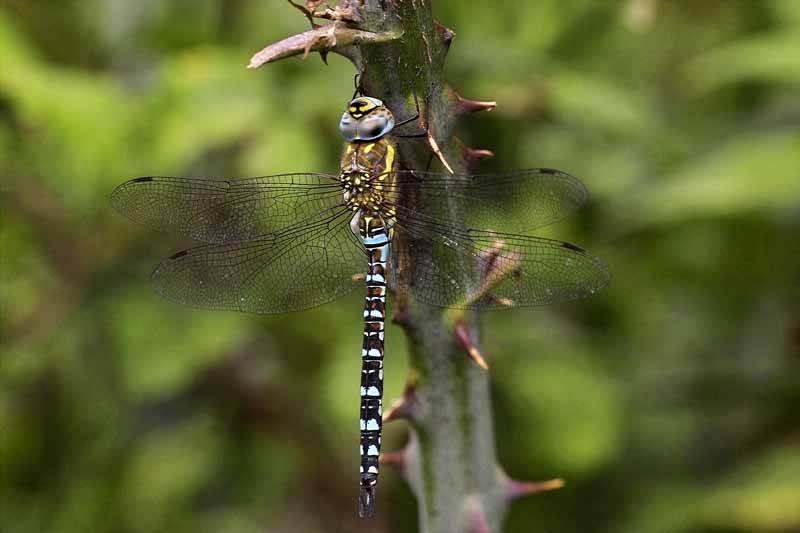
Common blues" in wheel" ![]() Migrant Hawker
Migrant Hawker
...OK, Damselflies are the smaller of the two, their bodies being about the size of a cocktail stick. Damselflies also fold their wings along the body when at rest.
Dragonflies have a much bigger body size and hold their wings at right angles to their bodies when at rest. Dragonflies also have large eyes which wrap around their heads provide forward and well as sideways vision.
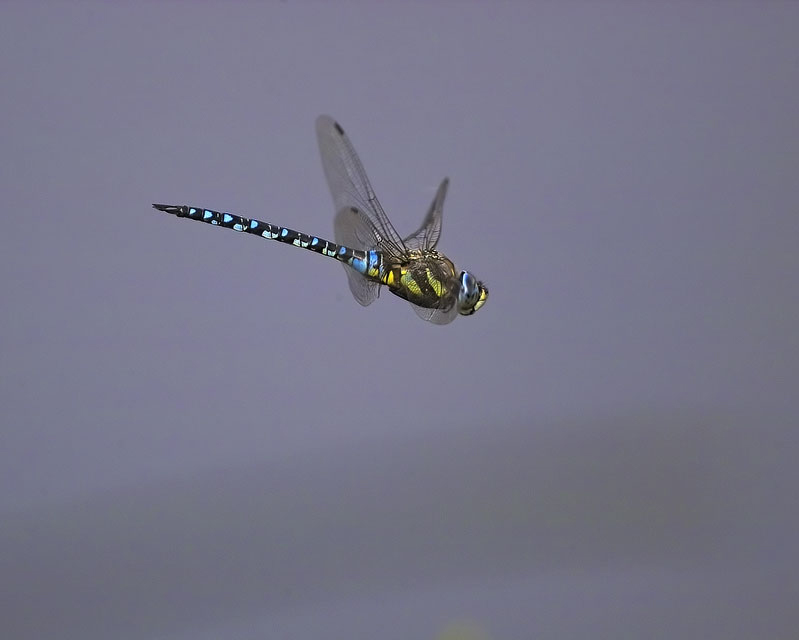
Migrant Hawker in flight
Both species catch their pray on the wing as they have excellent vision.
If you scan the reeds and the staging 4-6” above the water line you may be lucky enough to watch a Dragonfly or Damselfly emerge from its suck pump up its wings , dry out and fly off. The whole process takes about 20-30 minutes depending on the ambient temperature.
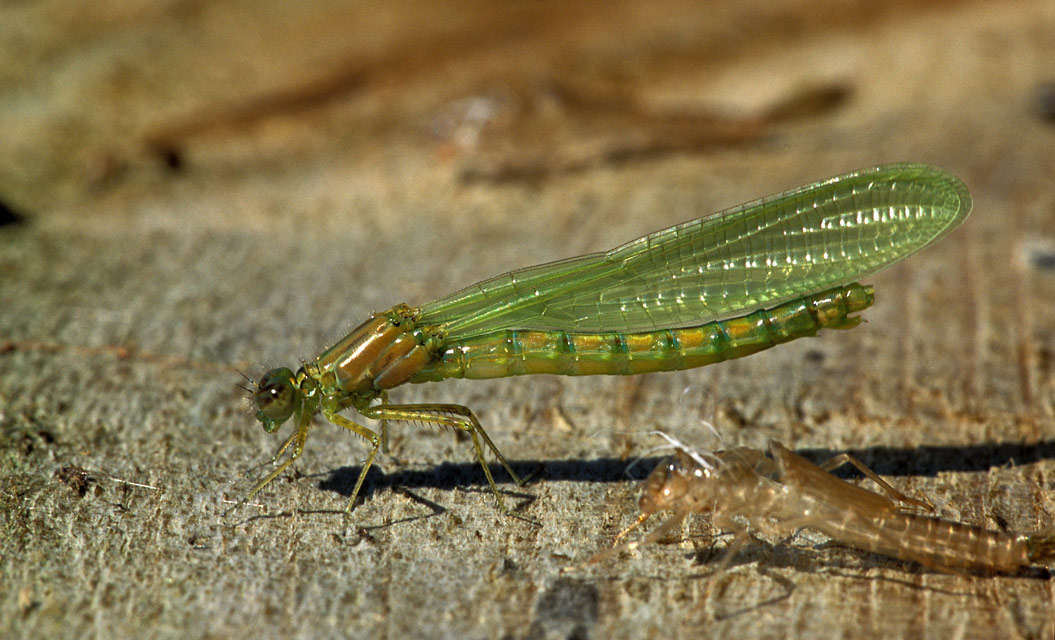
Common Blue Damselfly with shuck
If your not that lucky you may find the exuvia which is the remains of the exoskeleton from which the Dragonfly or Damselfly emerged.
They can be approached and you can get very close as long as you do it slowly don’t cast a shadow over them on the approach. You may have seen them flying in tandem with the male holding the female by the neck with a pair of claspers. They then descend to the water and either the female dips her abdomen into the water and releases and egg or they land and she forces her abdomen through the surface tension and lays her egg on a plant stem.
I have seen female Damselflies completely submerged while still attached to the male.
The reason for flying in tandem is to stop any rival males fertilizing the female as the males are able to extract a previously deposited sperm sack.
The Flag Irises are in full flower on Bailey’s and I noticed that the blackberry bushes have a good head of flowers buds which should open in the next couple of weeks.
Take the path between the car park and the boat park as the Heath Spotted Orchids are starting to flower and are definitely worth a look.
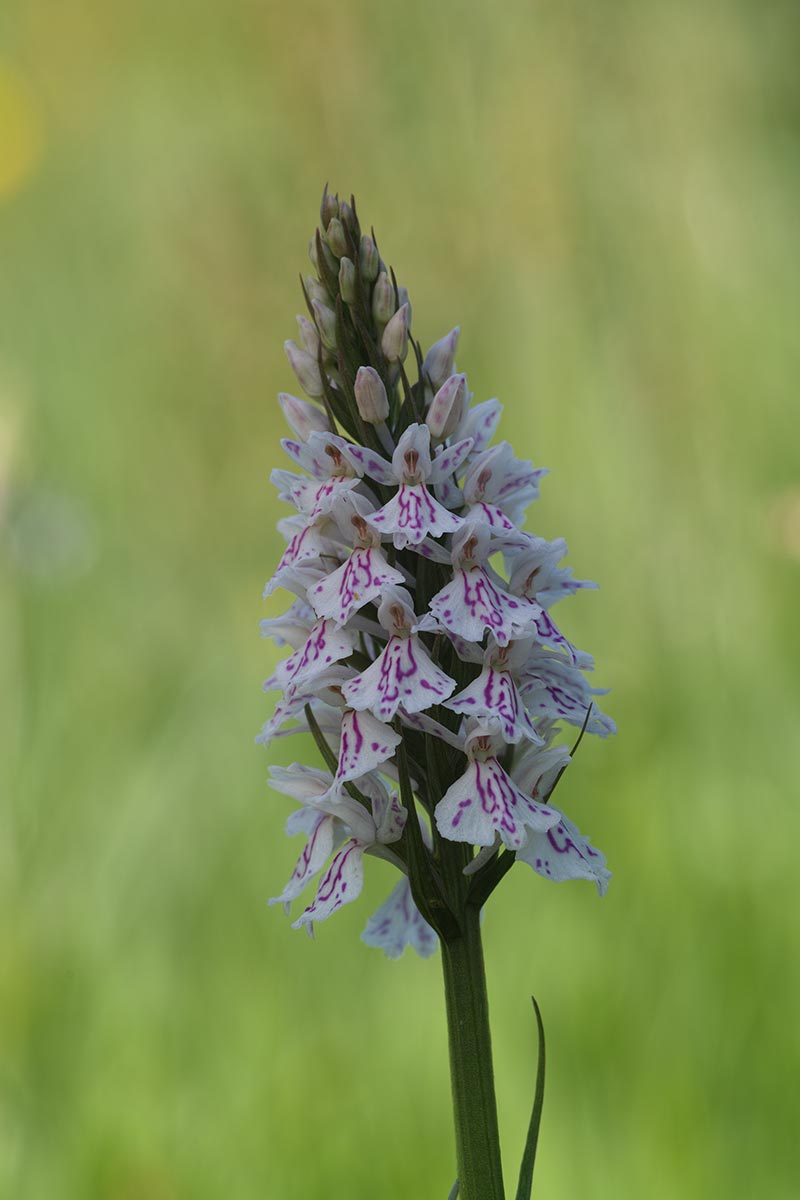
Damselflies have also started to emerge in their adult form and can be seen on the wing. At present there are a large number of Common Blue Damselflies as well as a few Blue-tailed Damselfly all seeking a mate. Once the male has been accepted and after passing on his sperm package he will clamp onto the female behind her head and stay connected until the female has completed laying her eggs. The circular position in the below picture is called the wheel position and allows the female to accept the sperm package
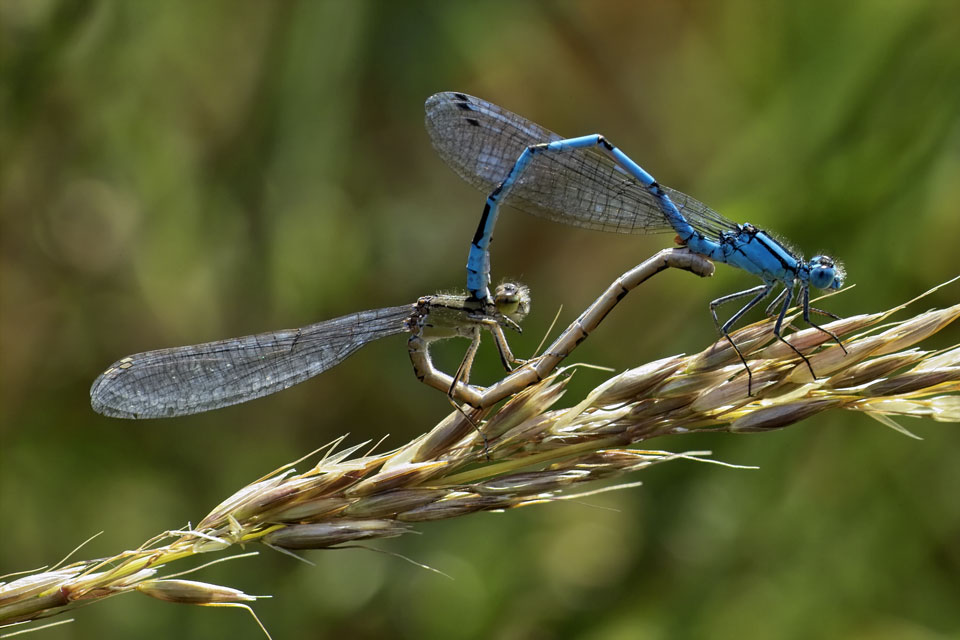
A lot of the birds will now have their first fledgling out with them as they introduce them to the world. There are a selection of ducklings and goslings on the water this month. A female Mallard had chicks down by the inlet on Monday and did the injured bird mimic to draw my attention away from them as I came round the corner and surprised her.
The Brambles are all in bud and it shouldn't be long before they are in flower which will bring out a large number of butterflies and other pollinating insects. The Flag Iris are also in flower, they are the bright yellow Iris at the water's edge.
All the tadpoles that have made it this far will have sprouted their legs and be getting ready to leave the water and should be foraging in the log grass.
You will also start to come across young Hedgehogs as the first young start to make their way in the world.
On Sunday, Monday and Tuesday there was a Cuckoo calling. It was on the old Oak at the back of the lake where the stream enters, right at the top on one of the dead branches. There was also a pair of Treecreepers on the Oaks on the right hand side as you walk from the car park to the boat park. It is a streaked brown upperparts and pale underparts with a needle like down curved bill used for extracting insects from the cracks and crevices in the tree bark. They typically feed in a spiral moving up the tree.
On Tuesday there was a Stoat on the path between the staging closest to the dam wall and the second one up, it didn't take any notice of me out on the staging trying to catch a fish. There is also a very active family of Stoats under the bridge on the back path to Bailey's. The young kits are racing about and playfully practising their stalking and attack strategies.
